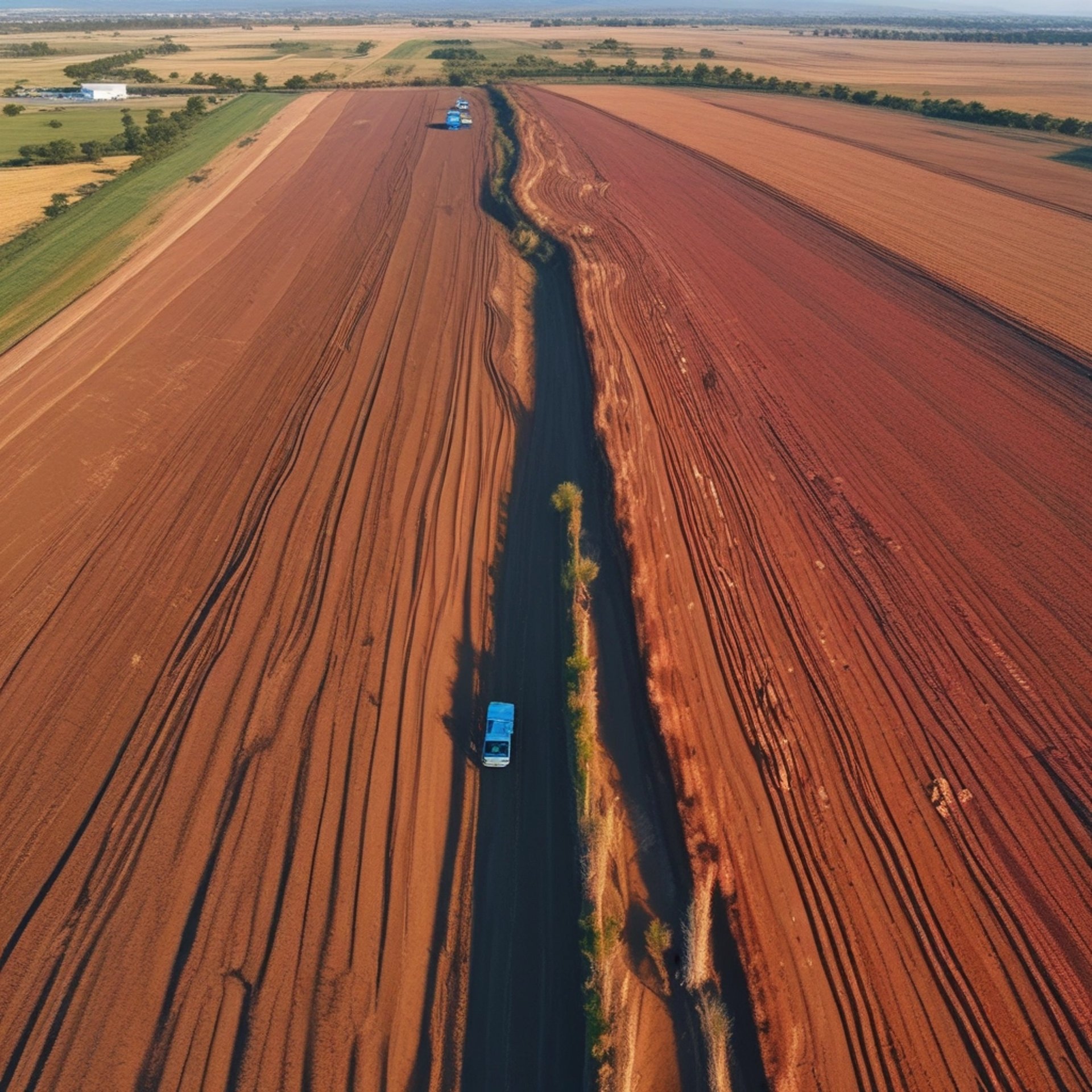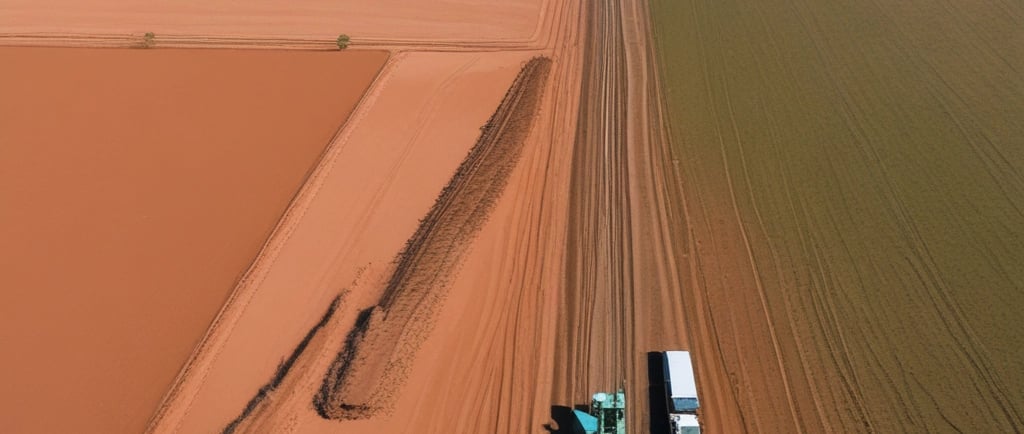🌿 GROWPlantWell – Nurture Nature, Transform Your Space 🌿

Building Resilience in Queensland Drylands with New Crops, Breeding Innovations, and Crop Intensification
Discover drought-tolerant crops, crop intensification strategies, and breeding innovations boosting productivity and sustainability in Queensland’s dry regions. Learn how farmers diversify and thrive despite water scarcity.
Rashid Saleem
8/8/20253 min read


Embracing Crop Diversity, Intensification, and Breeding Innovation in Dry Queensland
Queensland’s dryland farming regions face ongoing challenges from water scarcity, variable rainfall, and soil constraints. To thrive under these conditions, farmers are exploring new and promising crops alongside crop intensification and breeding new varieties—innovative approaches that increase productivity, improve resilience, and sustain the environment.
Testing and adopting diverse crops, intensification strategies, and improved varieties helps farmers spread risk, enhance soil health, and tap into emerging markets—paving the way for a resilient agricultural future in Queensland’s water-limited landscapes
What is Crop Intensification?
Crop intensification means increasing the amount and value of crop production per hectare per year through:
Growing multiple crops annually (double cropping, relay cropping)
Using high-yielding, drought-tolerant varieties
Integrating crops with livestock or pastures
Employing conservation practices that enhance soil moisture and fertility
In dry areas, intensification focuses on maximizing production from limited water and improving system resilience.
Breeding New Varieties: The Foundation of Future Farming Success
Developing new crop varieties tailored to Queensland’s dry conditions is vital for long-term agricultural success. Plant breeding focuses on:
Drought tolerance: Selecting genes that enable crops to maintain yields under water stress.
Heat resistance: Enhancing crops’ ability to withstand higher temperatures and heatwaves.
Pest and disease resistance: Reducing crop losses and minimizing chemical inputs.
Improved nutrient use efficiency: Helping crops thrive on low-fertility soils common in dry areas.
Faster maturity: Allowing crops to complete growth before drought intensifies or seasonal rains end.
Ongoing breeding programs at research institutions collaborate with farmers to release improved varieties of crops like sorghum, chickpeas, mung beans, lentils, and pulses, which are better adapted to dryland farming.
Alternative Grain Crops: Nutrition and Resilience
Quinoa
A drought-tolerant pseudocereal, quinoa adapts well to poor soils and dry climates, offering high nutritional value and growing consumer demand.
Millets (Pearl Millet, Finger Millet)
Hardy cereals with excellent drought resistance, millets are ideal for dry areas, providing grain for food and livestock feed.
Teff
A small-seeded grain from Ethiopia, teff thrives in short growing seasons and dry conditions, appealing to gluten-free markets.
Pulses and Legumes: Soil Builders and Protein Sources
Lentils
Water-efficient lentils fix nitrogen and perform well under drought stress, making them suitable for rotations in dry regions.
Faba Beans
Versatile and soil-improving, faba beans add diversity and fertility benefits.
Cowpeas
Multipurpose cowpeas provide grain, fodder, and soil enhancement, thriving in dry conditions.
Specialty Horticultural Crops: High-Value Options for Dry Regions
Olives
Thriving in Mediterranean-type climates, olives offer a sustainable, perennial high-value crop.
Pomegranates
Adapted to dry climates, pomegranates have growing demand domestically and overseas.
Almonds and Pistachios
Nut trees suited for dry areas with managed irrigation, providing lucrative returns.
Fig Trees
Drought-tolerant figs are a profitable fruit crop option.
Native and Indigenous Crops: Unlocking Australia’s Bushfood Potential
Wattle Seed
A drought-tolerant native legume with potential as a commercial bushfood crop.
Finger Lime
A native citrus fruit in demand for gourmet markets, suited to dry and subtropical climates.
Kangaroo Grass
Native grain and fodder crop with promise for dryland sustainable agriculture.
Forage and Cover Crops: Supporting Livestock and Soil Health
Sorghum (Silage)
Drought-tolerant forage crop critical for dryland livestock systems.
Desmanthus
A legume that boosts pasture productivity and nitrogen levels.
Lablab Bean
Heat and drought resistant, useful for forage, soil improvement, and grain.
Crop Intensification Strategies for Dry Areas
Maximizing Water Efficiency
Use of conservation agriculture techniques like minimum tillage and stubble retention to conserve soil moisture.
Precision irrigation (where feasible) and rainwater harvesting enhance water availability.
Drought-Resistant Varieties
Adoption of drought-tolerant and fast-maturing crop varieties improves yields under limited moisture.
Multi-Cropping Systems
Double cropping and relay cropping allow farmers to grow multiple crops per year, increasing total output.
Crop-Livestock Integration
Alternating cropping with pasture or integrating grazing improves soil health and diversifies income.
Data-Driven Decision Making
Use of climate forecasts, soil moisture sensors, and crop models to optimize planting dates and input applications.
Why Test and Adopt New Crops, Intensification, and Improved Varieties?
Diversification: Reduces risk by spreading production across crops and seasons.
Soil Health: Legumes and cover crops improve nitrogen and organic matter levels.
Market Opportunities: New crops tap into emerging food trends and niche markets.
Climate Resilience: Intensified, diversified systems better withstand drought and variability.
Higher Yields and Stability: Breeding advances deliver varieties that perform better under stress.
Getting Started with Crop Testing and Intensification
Conduct small-scale trials assessing yield, water use, and management.
Collaborate with research bodies and extension services for guidance.
Evaluate market access and value chains early.
Use data and monitoring to refine practices.
Building a Resilient and Productive Dryland Agriculture
Queensland’s dryland farmers can unlock new productivity and sustainability by combining promising crops with crop intensification techniques. Embracing drought-tolerant varieties, conservation agriculture, multi-cropping, and integrated livestock systems builds resilient farms ready for a changing climate and evolving markets.
Frequently Asked Questions (FAQs)
Q1: What crops are best for intensification in Queensland’s dry zones?
Drought-tolerant grains like quinoa, millets, and legumes such as lentils and cowpeas, combined with multi-cropping strategies.
Q2: How does crop intensification improve farm resilience?
By diversifying production, optimizing resource use, and reducing vulnerability to drought and price shocks.
Q3: How does breeding new varieties help dryland farming?
Breeding creates crops that better tolerate drought, heat, pests, and poor soils, boosting yields and reducing risks.
Q4: Can new horticultural crops thrive in dry areas?
Yes. Crops like olives, pomegranates, and native species adapted to dry climates offer promising options.